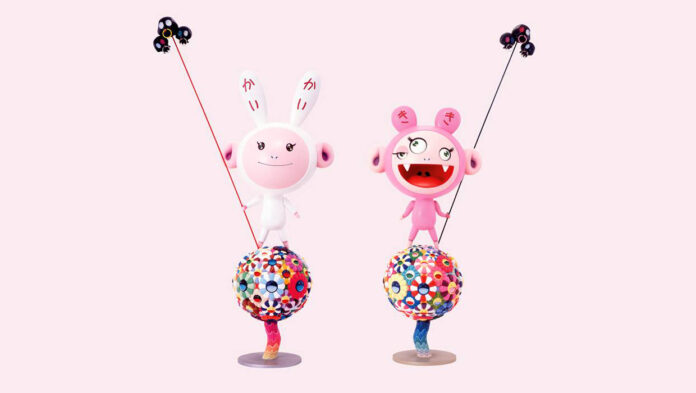Takashi Murakami’s paintings blur the lines between elitist and commercial art, presenting the public with images of classical Japanese culture recorded in a modern way, or gaudy knick-knacks for the super-rich. Smiling daisies, cute little big-eyed skulls and terrifyingly sized anime characters are the embodiment of a nobrow culture that exists outside of a dead hierarchy. Andy Warhol, Damian Hirst, and Jeff Koons are called stylistically related Murakami Takashi art.
However, the Japanese artist went further than his Western colleagues in pop art: collaboration with the Louis Vuitton label made Murakami one of the main apologists for the idea of art as a brand, and the creation of the KaiKai Kiki Co. with branches in major cities around the world has fundamentally changed the model of contemporary art production.
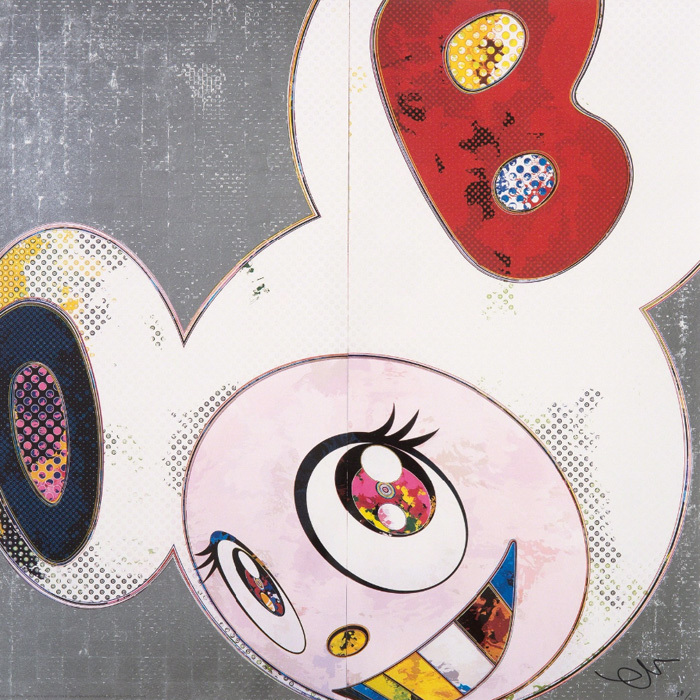
“My aesthetic vision was shaped by the environment that surrounded me: these are the narrow living quarters of post-war Japan, from where I mentally escaped into the world of manga and anime”
Takashi Murakami was born in 1962 to a taxi driver and a housewife. His childhood and youth fell on the Showa era as if in mockery of a time marked by wars, disasters, and occupation, called the “enlightened world”. During this period, following the economic recovery associated with the abandonment of the policy of self-isolation and the influx of new technologies, popular culture flourished in Japan.
Kaikai Kiki Co.
The American mass market became a revelation for the artist – a space of uncritical happiness and consumer effects that came into Murakami’s life along with the American occupation. In 1994, he went to New York for an internship. When he returned, he created a small studio, Hiropon Factory, which later grew into Kaikai Kiki Co. Murakami has built a real corporation, where more than two hundred employees work without days off and holidays. Today the company has offices in Tokyo, New York, and Los Angeles. The Murakami Factory is a high-performance conglomerate that churns out art and souvenirs, fulfills commissions from fashion houses, and produces a dozen up-and-coming Japanese artists.
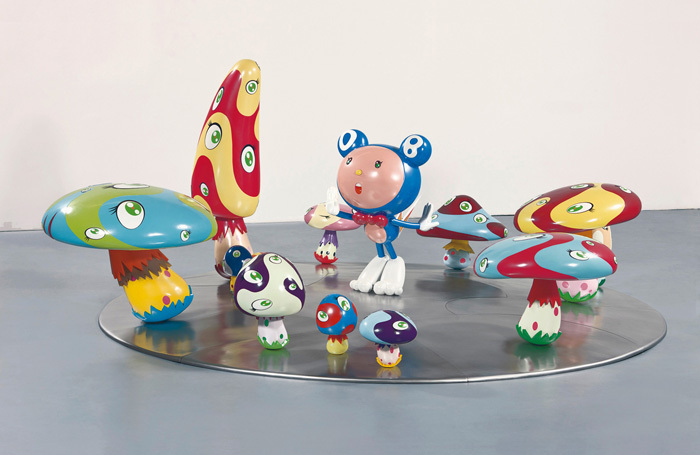
Mister DOB
In 1996, Murakami created a character named Mr. DOB, whose name is an abbreviation for the phrase “Dobojite dobojite” (“Why? Why?”). The artist conceived it as a new Mickey Mouse or Hello Kitty – the image idol of modern mass culture. Later, Murakami began to put the character on key chains, T-shirts, and mouse pads, turned the animal into a giant sculpture, and depicted it in several of his paintings.
In 2011 at a Christie’s auction in New York, collector Larry Gagosian bought one of Takashi Murakami’s paintings titled DOB in the Strange Woods (1999) for $2.8 million.
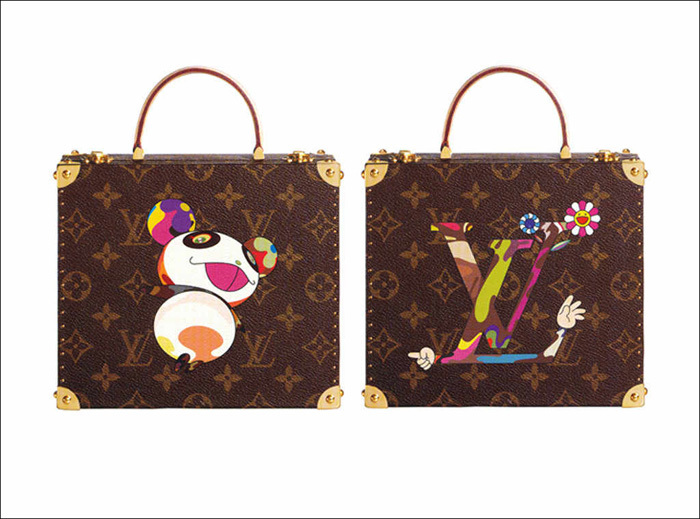
Louis Vuitton
In 2002, Murakami began collaborating with Louis Vuitton: first, at the request of art director Marc Jacobs, Murakami updated the brand’s design and redesigned the LV monogram, painting it in bright colors. This project brought in more than $300 million to Louis Vuitton and turned Murakami into an apologist for the idea of art as a commercial brand.
Shortly after the launch of his line at Louis Vuitton, Murakami repeated the same images printed on bags in Takashi Murakami paintings. In 2007 he even exhibited a Louis Vuitton boutique at the Museum of Modern Art in Los Angeles.
National identity and super flat
Having dealt with his personal brand, Murakami decided to take up the image of his native Japan. The identity of the country, as the artist believed, should be built on the basis of a deep analysis of culture and its roots. Disillusioned with the ability of his compatriots to produce new meanings, he came up with the concept of Superflat. Super-flat visual language, according to Murakami, is characteristic of both traditional Japanese painting and animation, comics, and graphic design. The result is a hybrid of classic painting and eye-catching candy wrappers with an aesthetic that the artist loves to play with.
Louis Vuitton
In 2002, Murakami began collaborating with Louis Vuitton: first, at the request of art director Marc Jacobs, Murakami updated the brand’s design and redesigned the LV monogram, painting it in bright colors. This project brought in more than $300 million to Louis Vuitton and turned Murakami into an apologist for the idea of art as a commercial brand.
Shortly after the launch of his line at Louis Vuitton, Murakami repeated the same images printed on bags in Takashi Murakami paintings. In 2007 he even exhibited a Louis Vuitton boutique at the Museum of Modern Art in Los Angeles.
National identity and super flat
Having dealt with his personal brand, Murakami decided to take up the image of his native Japan. The identity of the country, as the artist believed, should be built on the basis of a deep analysis of culture and its roots. Disillusioned with the ability of his compatriots to produce new meanings, he came up with the concept of Superflat. Super-flat visual language, according to Murakami, is characteristic of both traditional Japanese painting and animation, comics, and graphic design. The result is a hybrid of classic painting and eye-catching candy wrappers with an aesthetic that the artist loves to play with.
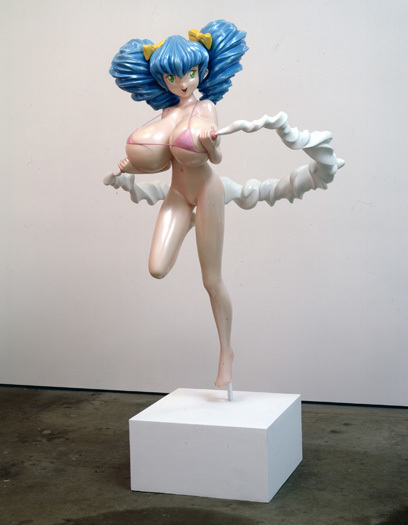
“Chiropon” and the scandal at Versailles
“Chiropon” is an anime girl with a tiny waist and huge breasts, from which jets of milk burst. By placing it on a pedestal, Murakami reminded us that anime has the right to be called “high art”, despite the pornographic enthusiasm and the transformation of girlish innocence into a fetish object.
The sculpture was the cause of the scandal that erupted around the Murakami exhibition planned at Versailles. Then more than 11,000 people signed a petition demanding that vicious contemporary art be kept out of the palace.
Skulls, daisies, and industry
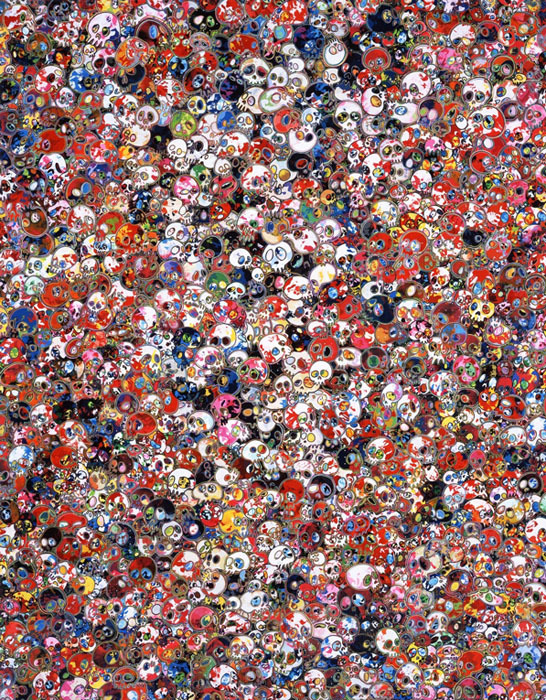
Smiling daisies and big-eyed skulls appear constantly in Murakami Takashi’s art. Most of all, they resemble computer graphics generated by the obsession to depict the world as cute and infantile as possible. Thus, the artist claims that “everyone will eventually die, so there is no need to worry.”






